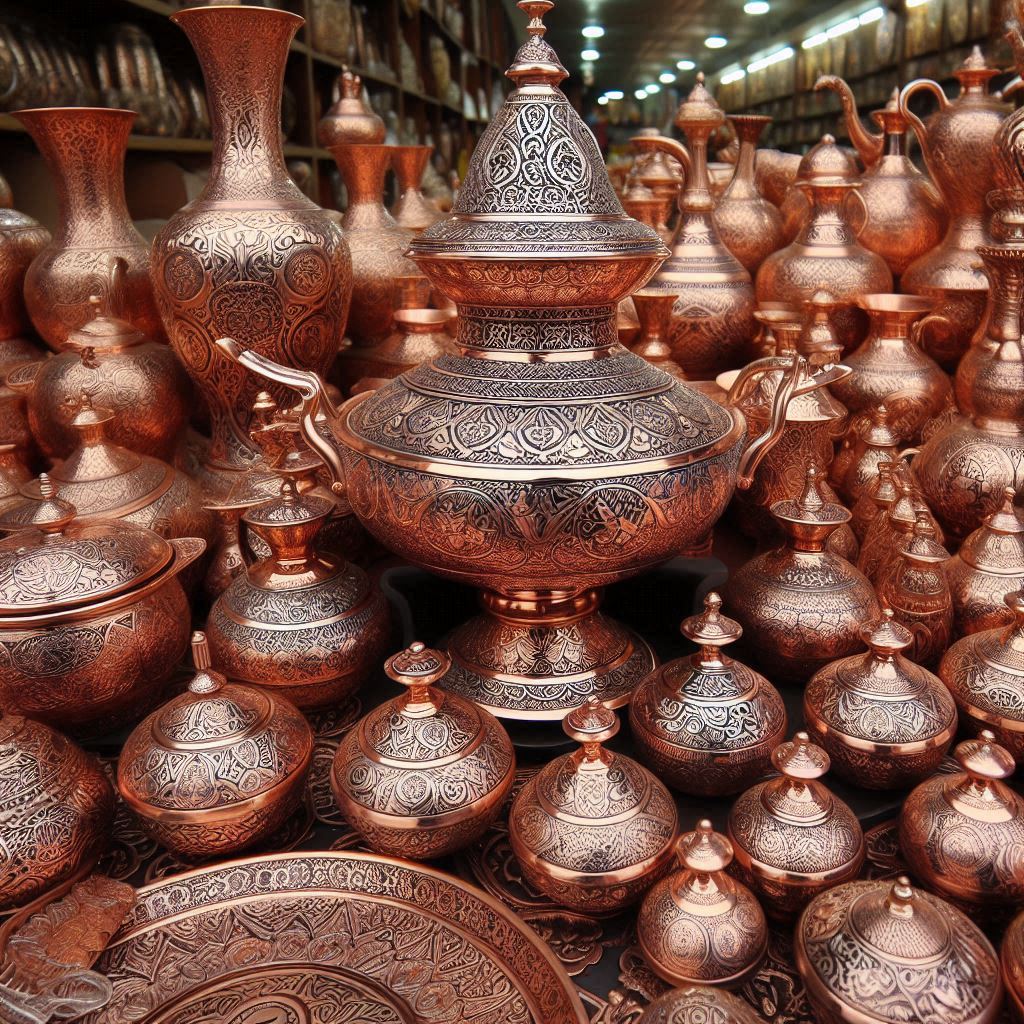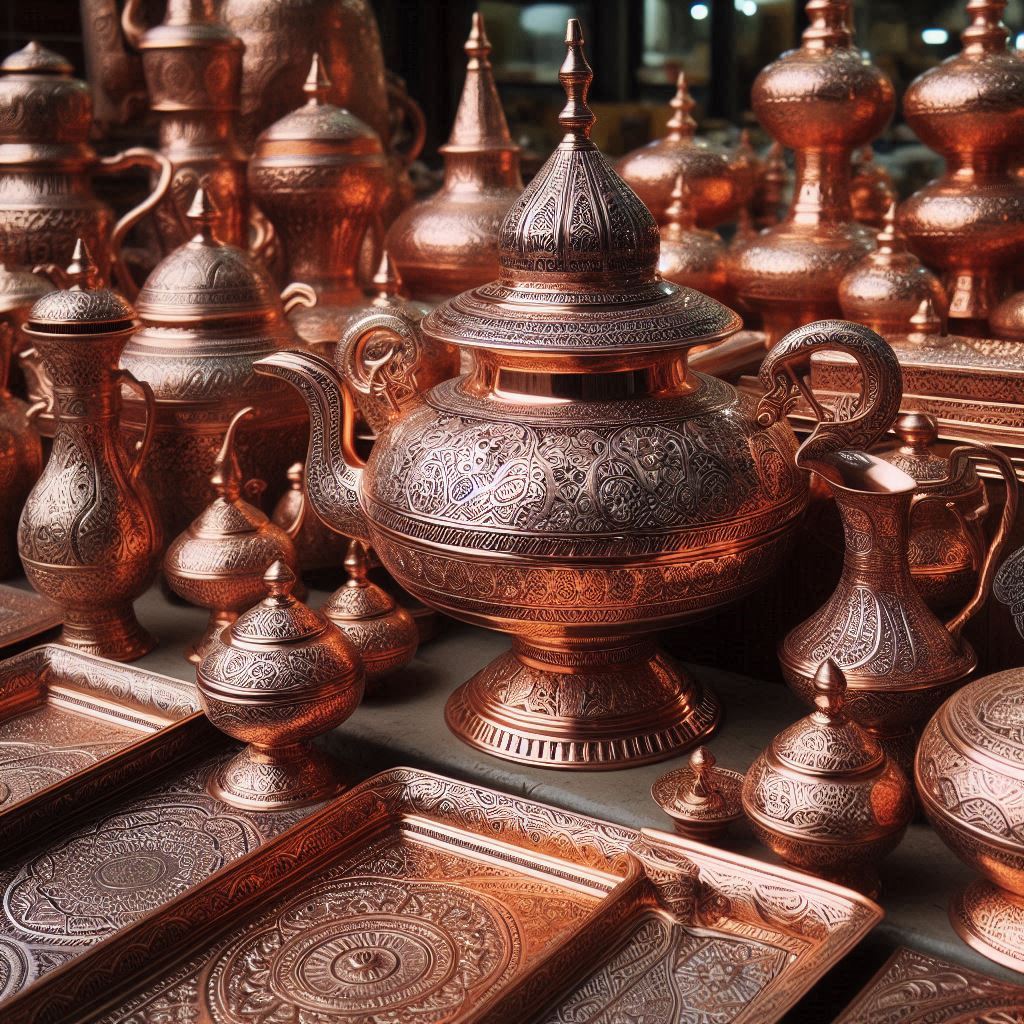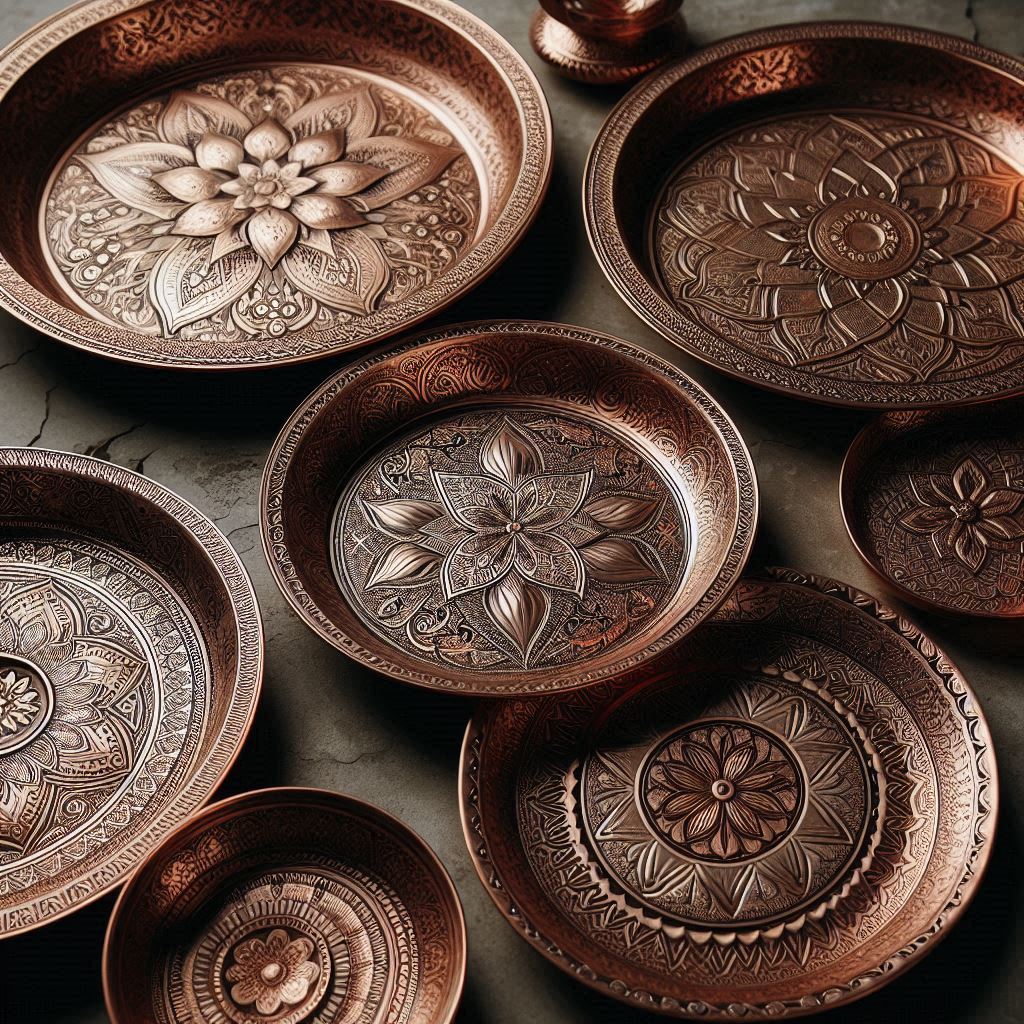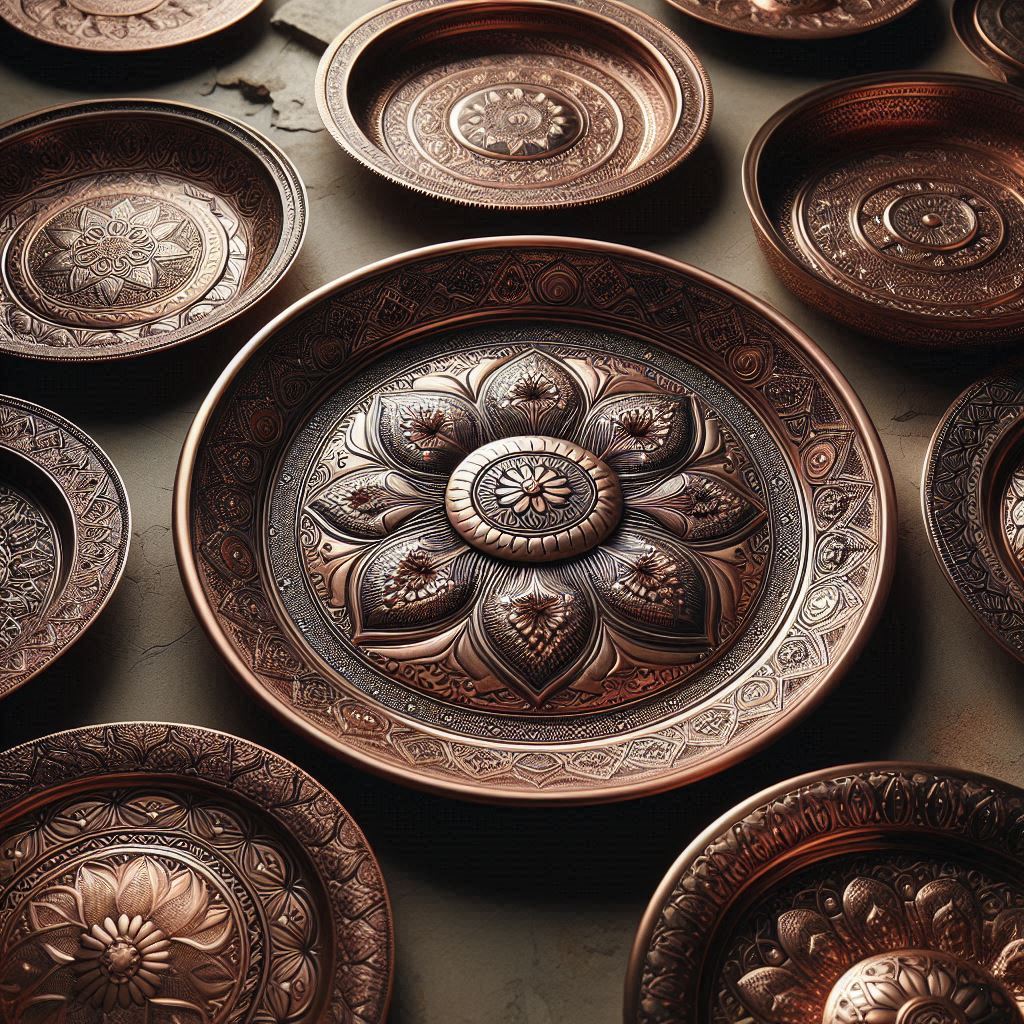Copperware of Pakistan
Copperware of Pakistan: A Heritage of Art and Craftsmanship
Copperware of Pakistan: Art and Tradition
Copperware of Pakistan is a reflection of the country’s rich cultural and artistic heritage, combining centuries-old techniques with regional artistry. From Kashmir to Peshawar, Multan, and Lahore, copper artisans have been perfecting their craft, creating pieces that are not just functional but also exquisite works of art. These traditional handcrafted items, such as bowls, trays, and vases, feature intricate designs inspired by Islamic art and natural elements.
 Copperware of Pakistan
Copperware of PakistanCopperware of Pakistan: The Origins of Copper Crafting in Pakistan
Copperware has a long-standing tradition in Pakistan, with its roots stretching back to ancient times. The Mughal Empire and Persian influence played a significant role in shaping the intricate designs found on copper pieces. Over time, these influences merged with indigenous artistic expressions, particularly Islamic geometric patterns, floral motifs, and calligraphy. Historically, copper items were used in both utilitarian and decorative forms, serving roles in everyday life and ceremonial practices.
Today, these pieces continue to embody both beauty and practicality. They represent the enduring legacy of craftsmanship passed down through generations of artisans.
Visiting the bazars that are famous for copperware products has always been a fascinating experience. Today we share the experience with the reader of this page.
Copperware of Pakistan: Where is Copperware Crafted in Pakistan?
Copperware is predominantly crafted in regions known for their deep-rooted artistic traditions. These areas are celebrated for their distinctive styles and techniques:
- Kashmir: Famous for its Naqashi engraving technique, Kashmiri copper artisans create finely etched designs featuring floral and paisley patterns. This method, requiring precision and patience, is inspired by the region’s natural beauty, with motifs like Chinar leaves reflecting the local flora.
- Peshawar: Known for its traditional methods, Peshawar artisans excel in hammered embossing, where intricate patterns are raised from the metal’s surface. The region is also recognized for its decorative trays, samovars, pots and vessels, combining Islamic and local artistic influences.
- Multan and Lahore: These cities, celebrated for their rich cultural history, focus on Islamic calligraphy and carving, often seen in decorative items like tea sets and lanterns. Artisans here mix ancient techniques with modern aesthetics, creating works that are both functional and visually striking.
Copperware of Pakistan - The Crafting Process: Techniques Passed Through Generations
The process of creating copperware is highly detailed and requires immense skill. Artisans in Pakistan continue to use techniques passed down for centuries:
- Hammered Embossing: This technique involves hammering copper from the reverse side to create raised patterns on the front. It’s a highly labor-intensive process, where every strike of the hammer must be precise to ensure the motif is evenly raised.
- Naqashi (Engraving): A delicate form of engraving, Naqashi involves carving intricate designs into the copper surface. This method is commonly used in Kashmir, where artisans etch floral and geometric patterns, often accompanied by intricate details like paisleys and leaf motifs.
- Carving and Piercing: For decorative items like lanterns and jewelry boxes, copper is carefully carved or pierced, creating stunning lace-like patterns that enhance the visual appeal of the item.
- Meenakari (Enamel Work): Though less common in copperware, some artisans combine copper with Meenakari, a technique where colored enamels are fused into the metal, adding vibrant hues to the finished pieces. This is often seen in ornamental copper jewelry or small decorative items.



Copperware of Pakistan - Products made with Copper
- Copper Bowls: Perfect for serving or as statement décor.
- Hand-etched Trays: Intricately designed for luxurious entertaining.
- Carved Vases: Stunning centerpieces for any space.
- Tea Sets: Blending tradition and charm for a perfect cup of tea.
- Decorative Plates: Wall-mounted or tabletop masterpieces.



Copperware of Pakistan-The Source of Copper in Pakistan
Where Does Copper Come From?
Pakistan is blessed with abundant natural resources, and copper is among its key minerals.
The copper used in Pakistan’s traditional copperware is sourced from rich deposits found in the country. These local sources of copper help sustain the craft, providing artisans with high-quality raw materials for their work. The main copper reserves are located in:
- Chagai District, Balochistan: The Saindak and Reko Diq mines are among the most significant copper reserves, supplying the raw material for countless artisan workshops.
- Swat Valley and Dir District, Khyber Pakhtunkhwa: Known for their natural beauty, these regions also contribute to the country's copper deposits. The region of Swat and Dir is known for its copper deposits, although on a smaller scale compared to Balochistan.
These mines provide the foundation for the artistry that transforms raw copper into intricately designed masterpieces.
Copperware of Pakistan - The Cultural Significance of Copperware
In addition to its artistic value, copperware in Pakistan plays an important role in cultural and social traditions. Copper vessels are often used in ceremonial settings, while decorative items like trays, vases, and lamp stands are considered symbols of hospitality and elegance in Pakistani culture. The intricate designs reflect the spiritual and aesthetic values of the region, often echoing themes from Islamic art.
Copperware of Pakistan - A Legacy Preserved
Pakistani copperware is a proof the skill and creativity of its artisans. From Kashmir to Peshawar, Multan, and Lahore, the tradition of crafting copper continues to thrive, combining old-world techniques with contemporary flair. These pieces are not just items of utility—they are works of art, carrying with them the rich cultural traditions and artistry of Pakistan.
By showcasing these exquisite copper creations, we honor the enduring legacy of craftsmanship and the artistic mastery that continues to define Pakistani culture.
- Home
- Products and Trades
- Copperware of Pakistan


